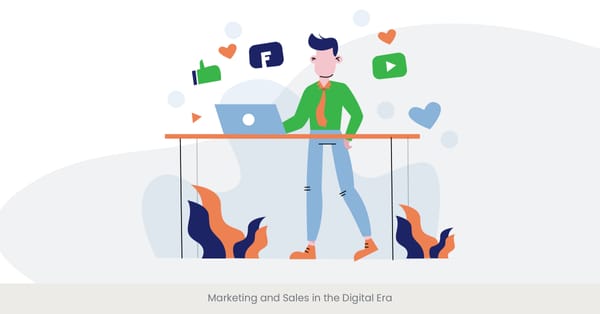
Key Components of Effective Marketing Decks
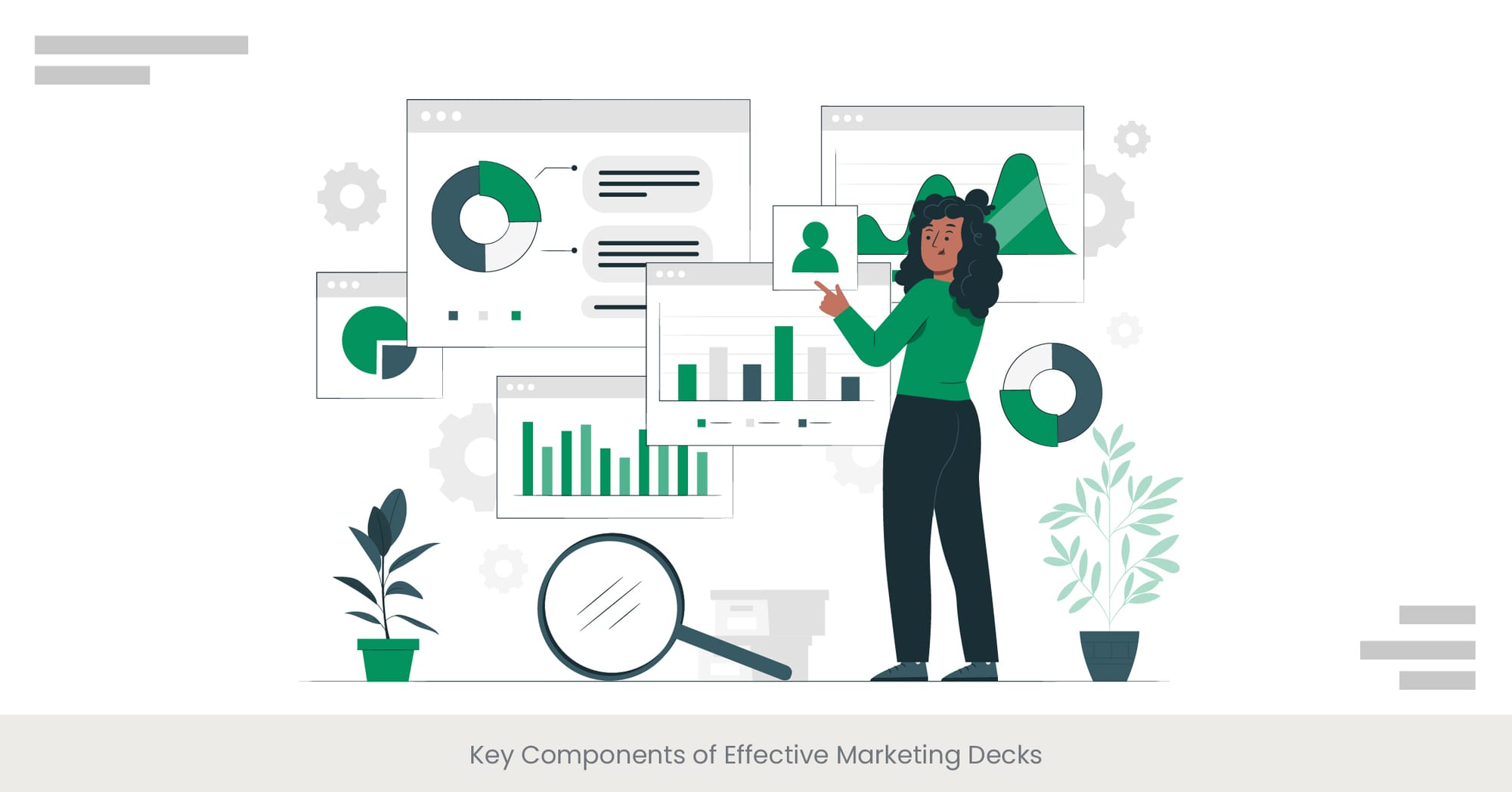
Introduction to Essential Elements
Effective marketing decks are more than just visually appealing slides; they are strategic tools that communicate a company's marketing strategy, vision, and value proposition succinctly and compellingly. A sales presentation agency for leadership teams plays a crucial role in ensuring that the deck resonates with top decision-makers. The foundation of a successful marketing presentation lies in its ability to engage the audience, convey key messages, and prompt decisive action. Essential components such as a clear narrative, compelling design, consistent branding, and data visualization are critical in achieving these objectives. By integrating these elements, businesses can craft marketing decks that not only captivate but also effectively communicate their marketing strategy and goals.
The Backbone of Strategic Communication
The anatomy of an impactful marketing plan presentation or deck begins with a well-defined structure that guides the audience through a logical progression of ideas, leading to a compelling call to action. This structure is underpinned by a thorough understanding of the marketing plan, including key marketing objectives, target audience insights, and the unique selling proposition that sets a brand apart. A sales presentation agency for leadership teams will ensure that the messaging is aligned with organizational goals, particularly for high-level executives. Historical contexts, such as the evolution of marketing presentations and the role of digital transformation in enhancing deck effectiveness, underscore the importance of adaptability and innovation in marketing efforts.
Real-World Applications and Innovations
Leading brands demonstrate the power of effective marketing decks through case studies and success stories. For instance, a technology company might use dynamic data visualization to showcase its growth trajectory and market impact, making a compelling case for investor engagement. Another example could be a retail brand employing storytelling through its marketing presentation to connect emotionally with its audience, thereby enhancing brand loyalty and customer engagement. Additionally, tailored sales decks for global brands are integral in maintaining consistency across international markets, ensuring that messaging aligns with diverse cultural nuances. These real-world examples highlight the significance of integrating storytelling, data visualization, and interactive elements to create memorable and persuasive marketing decks.
Evidence-Based Validation
Supporting the effectiveness of these components, numerous studies and industry reports offer valuable insights. Research conducted by marketing analysis firms reveals that presentations incorporating interactive elements and storytelling are significantly more likely to engage and persuade audiences. Furthermore, a survey by a leading design platform indicates that decks featuring consistent branding and professional design outperform those without, in terms of audience retention and action motivation. These findings, along with statistics highlighting the importance of visual elements in communication—such as the fact that people remember 65% of information when paired with a relevant image, compared to 10% without—underscore the critical nature of these key components in crafting effective marketing decks.
Elevate Your Presentations with INK PPT’s Expert Design Services.
Customizing Templates for Brand Consistency
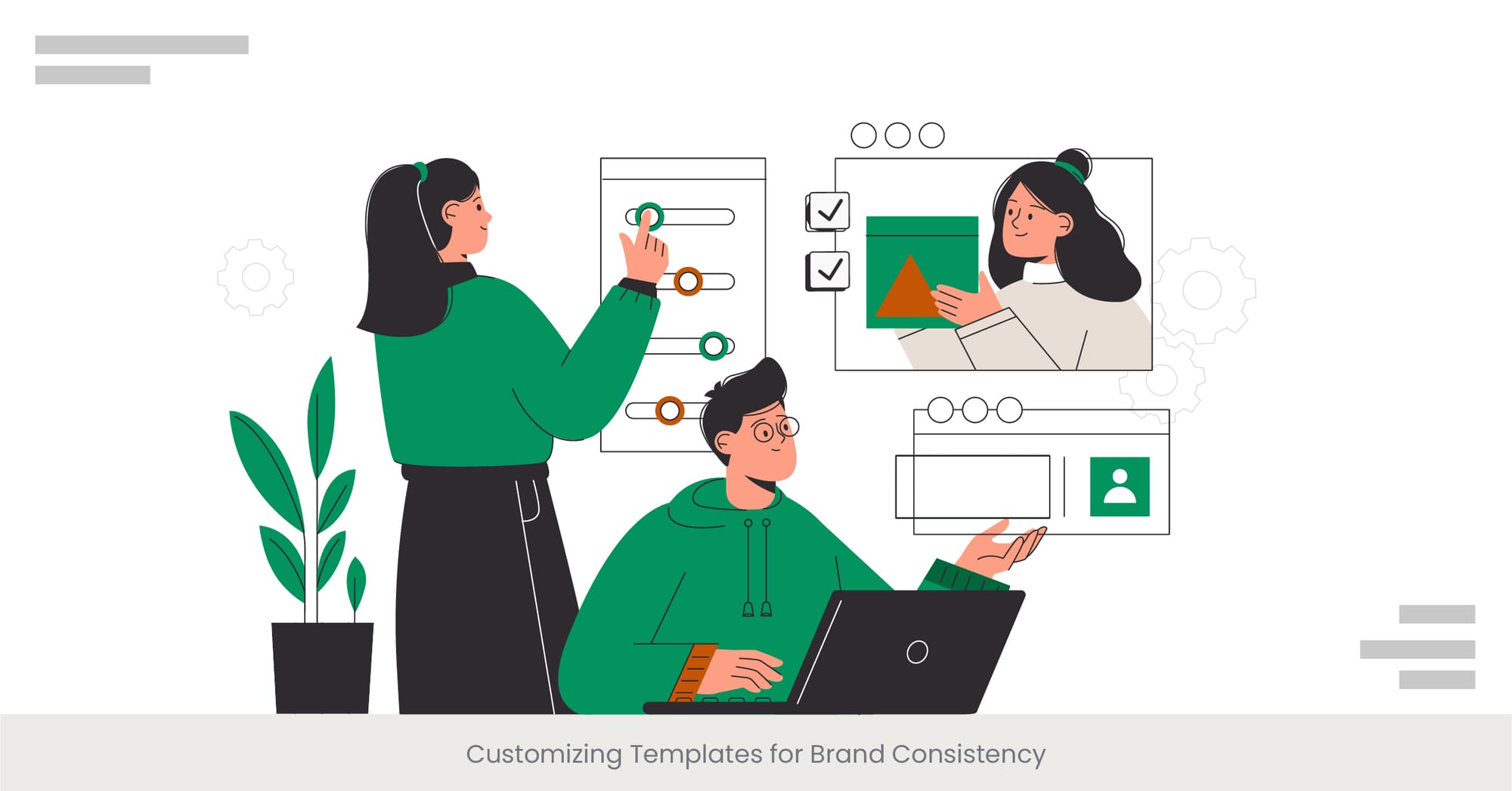
The Art of Brand Coherence in Marketing Materials
In the competitive landscape of marketing, brand consistency emerges as a crucial factor in building recognition and trust among target audiences. Customizing templates for marketing presentations, documents, and decks ensures that every piece of communication reflects the brand's core identity and values. This alignment extends beyond logos and color schemes; it encompasses the tone of voice, visual style, and overall messaging strategy. Custom sales presentations for CXOs should seamlessly integrate brand elements, aligning with the high-level needs of executives while maintaining consistency across the board. Tailored templates serve as a foundation for creating marketing materials that reinforce brand identity, enhancing the coherence and impact of the marketing strategy across various platforms and touchpoints. For tailored sales decks for global brands, templates are particularly crucial to maintaining brand identity while adapting to different market conditions and cultures.
Historical Evolution and Strategic Importance
The concept of brand consistency is not new, but its application in marketing templates has evolved significantly with the advent of digital marketing and advanced design tools. Historically, brands relied on manual guidelines to ensure uniformity across marketing efforts. Today, digital templates offer a more efficient and scalable solution, enabling marketers to maintain consistency without sacrificing creativity. The strategic importance of customized templates lies in their ability to standardize branding elements, ensuring that every marketing presentation or document contributes to a cohesive brand story and strengthens the marketing strategy. For tailored sales decks for global brands, templates are particularly crucial to maintaining brand identity while adapting to different market conditions and cultures.
Leveraging Templates for Maximum Impact
Real-world examples of successful template customization abound in both digital and traditional marketing realms. A notable instance is a global retail brand that implemented a suite of customized templates for its marketing team, resulting in a unified brand experience across all customer touchpoints. Another example involves a tech startup that used brand-consistent templates for its investor pitches and marketing collateral, significantly improving its brand perception and investment appeal. These cases illustrate how effectively customized templates can amplify a brand’s message, streamline marketing efforts, and foster a strong, consistent brand identity.
Research-Backed Insights
Research underscores the effectiveness of brand consistency, with studies indicating that consistent branding across all channels increases revenue by up to 23%. Moreover, a survey by a leading marketing platform revealed that companies with brand consistency issues risk confusing their audience, potentially decreasing brand loyalty and engagement. Customizing templates plays a pivotal role in avoiding such pitfalls, enabling brands to maintain a consistent identity. Industry reports further highlight that templates not only save time and resources but also significantly contribute to a coherent and effective marketing strategy, as evidenced by enhanced engagement metrics and brand recall rates.
Design Principles for Marketing Materials
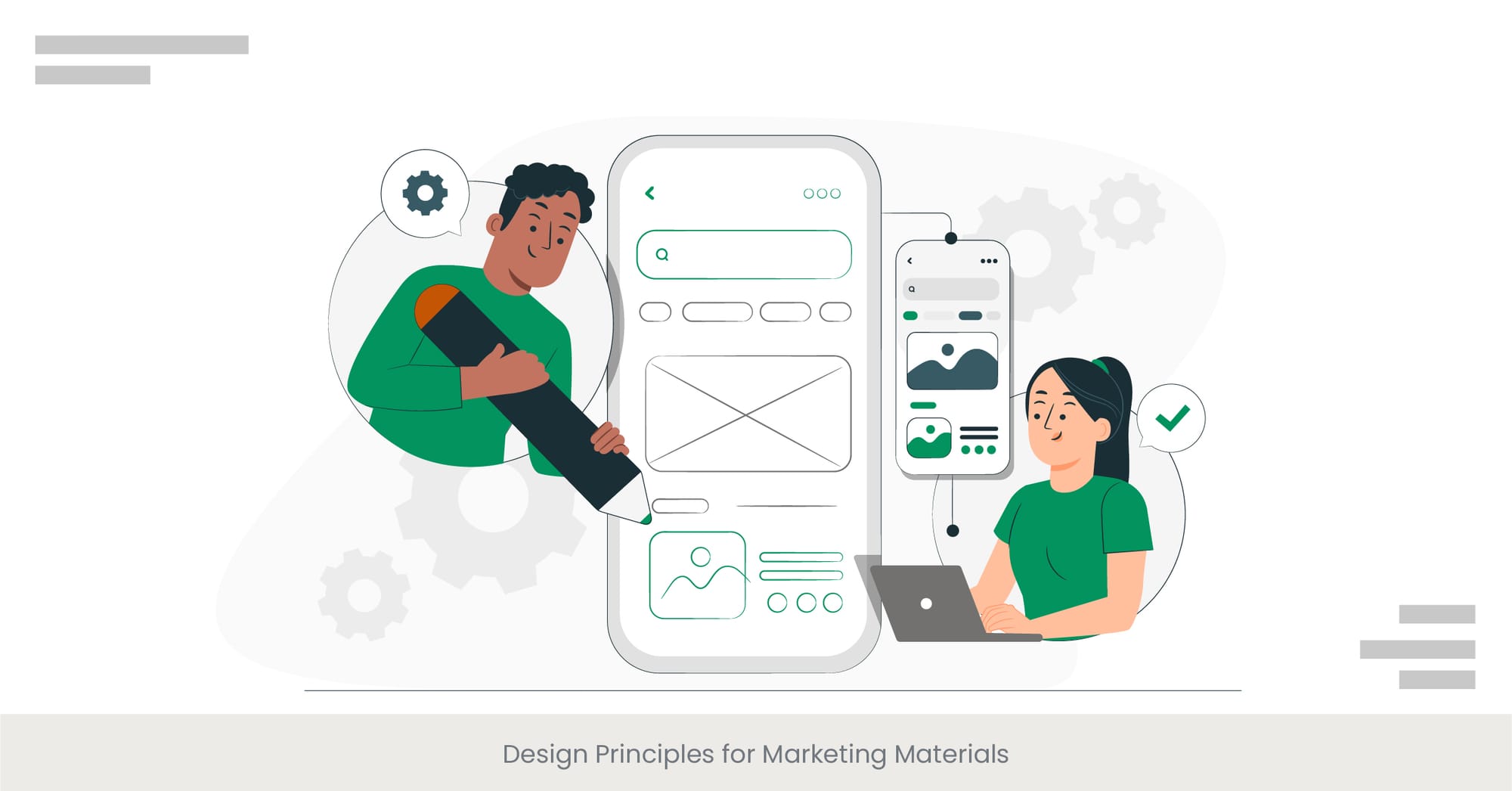
Crafting Visual Impact
The creation of effective marketing plan presentation and materials that not only inform but also engage and persuade requires a deep understanding of foundational design principles. These principles—contrast, balance, hierarchy, repetition, alignment, and proximity—serve as the architect's tools in the realm of visual communication. By skillfully applying these principles, marketers can produce materials that stand out in a crowded marketplace. This involves the strategic use of color, typography, and layout to create a visual hierarchy that guides the viewer's attention to the most important messages, thereby enhancing the marketing presentation’s effectiveness and ensuring the template’s impact aligns with the marketing strategy. For Google Slides customizations for marketing teams, these principles are especially important as the slides should balance visual appeal with clarity.
The Evolution of Design in Marketing
The importance of design in marketing materials has evolved significantly over the years, from simple informational flyers to complex digital presentations that incorporate interactivity and multimedia elements. This evolution reflects the changing landscape of consumer expectations and technological advancements. Historical analysis shows that as society becomes more visually oriented, the role of design in marketing strategies becomes increasingly critical. By understanding the historical context and evolution of design principles, marketers can better appreciate the role that well-designed templates play in conveying a brand's message and achieving its various marketing goals and objectives. As a sales presentation agency for leadership teams, it's essential to focus on design that resonates with the executive level and drives decision-making.
Real-World Design Success Stories
Examples of design excellence in marketing materials abound, illustrating the transformative power of effective design. A notable success story involves a leading beverage company that redesigned its marketing presentation templates to better reflect its brand identity, resulting in increased consumer engagement and improved sales figures. Another example is a technology firm that utilized principles of contrast and hierarchy in its marketing decks, significantly enhancing message clarity and investor interest. These real-world cases highlight the practical application of design principles in achieving marketing success and underscore the importance of integrating thoughtful design into your marketing plans, templates and presentations.
Empirical Evidence and Design Effectiveness
The link between effective design and marketing campaign success is well-documented in academic and industry research. Studies have shown that consumers are more likely to engage with marketing materials that are visually appealing and easy to understand. For tailored sales decks for global brands, design is paramount to ensure that messages are conveyed effectively across diverse markets. Research indicates that incorporating specific design principles can increase comprehension by up to 40%. Furthermore, marketing presentations that utilize professional and consistent design templates have been proven to retain audience attention more effectively than those that do not. These statistics validate the critical role that design plays in enhancing the effectiveness of marketing materials, providing a strong foundation for the strategic use of design in marketing campaigns.
Interactive Elements in Marketing Decks
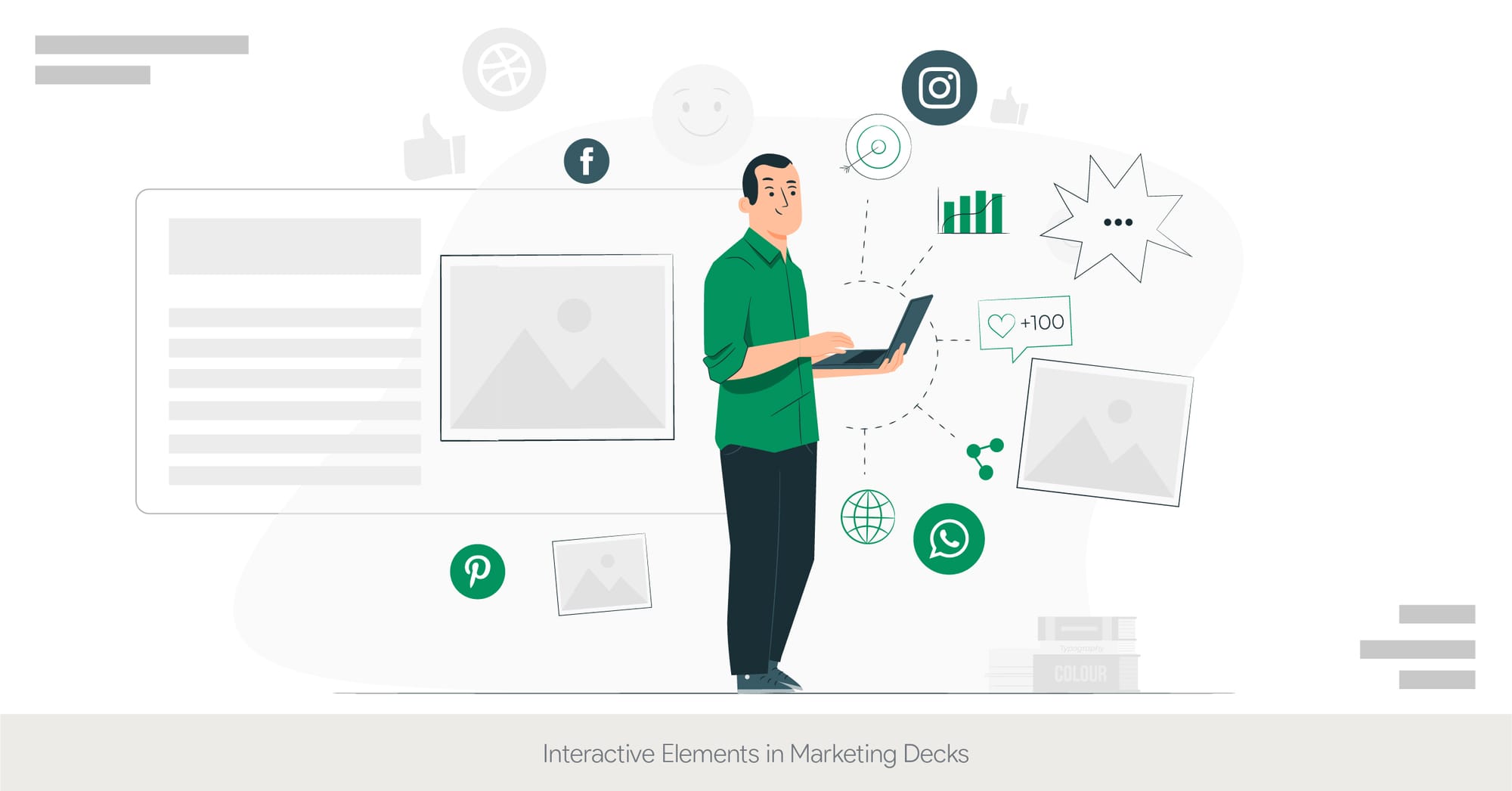
Engagement Through Interactivity
In the digital era, the dynamics of audience engagement have evolved, demanding more than static images and texts. Interactive elements in marketing decks—such as clickable links, embedded videos, and interactive infographics—transform passive viewers into active participants. This engagement not only enhances the viewer's experience but also significantly increases the retention of information presented. Incorporating interactivity into marketing presentations aligns with the overarching marketing strategy by creating memorable content that stands out in a crowded digital landscape, driving deeper connections between the brand and its target audience.
A Historical Perspective on Interactivity
The concept of interactivity in marketing is not new but has gained unprecedented importance with the advent of digital technology. Historically, marketing materials were limited to print and broadcast mediums, offering little to no opportunity for audience interaction. However, the rise of the internet and digital platforms has revolutionized the way brands communicate with their audiences. This shift towards digital interactivity reflects a broader trend in consumer behavior, where audiences now expect and appreciate a two-way dialogue with brands. By understanding this historical shift, marketers can better leverage interactive elements in their marketing decks to engage modern audiences effectively.
Showcasing Success Through Innovation
Several brands have set benchmarks in integrating interactive elements into their marketing strategies. For example, a renowned automotive brand utilized an interactive marketing presentation to launch a new vehicle model, allowing potential customers to explore different features and customize the car virtually. This innovative approach not only captivated the audience's interest but also significantly boosted pre-launch engagement metrics. Another instance is a technology company that incorporated interactive data visualizations in its annual report, making complex information accessible and engaging for stakeholders. These examples demonstrate the power of interactive elements in driving engagement and enhancing the effectiveness of marketing presentations.
Supporting Data on Interactivity's Impact
The efficacy of interactive marketing materials is supported by a wealth of data. Research indicates that interactive presentations can increase audience engagement rates by up to 50% compared to traditional slides. Furthermore, a study by a leading marketing analytics firm found that marketing decks featuring interactive elements yield higher conversion rates, with users spending more time exploring the content and showing increased interest in the brand's offerings. These findings underscore the strategic value of incorporating interactive components into marketing materials, not only to captivate and engage but also to drive tangible marketing success.
Storytelling Through Data Visualization
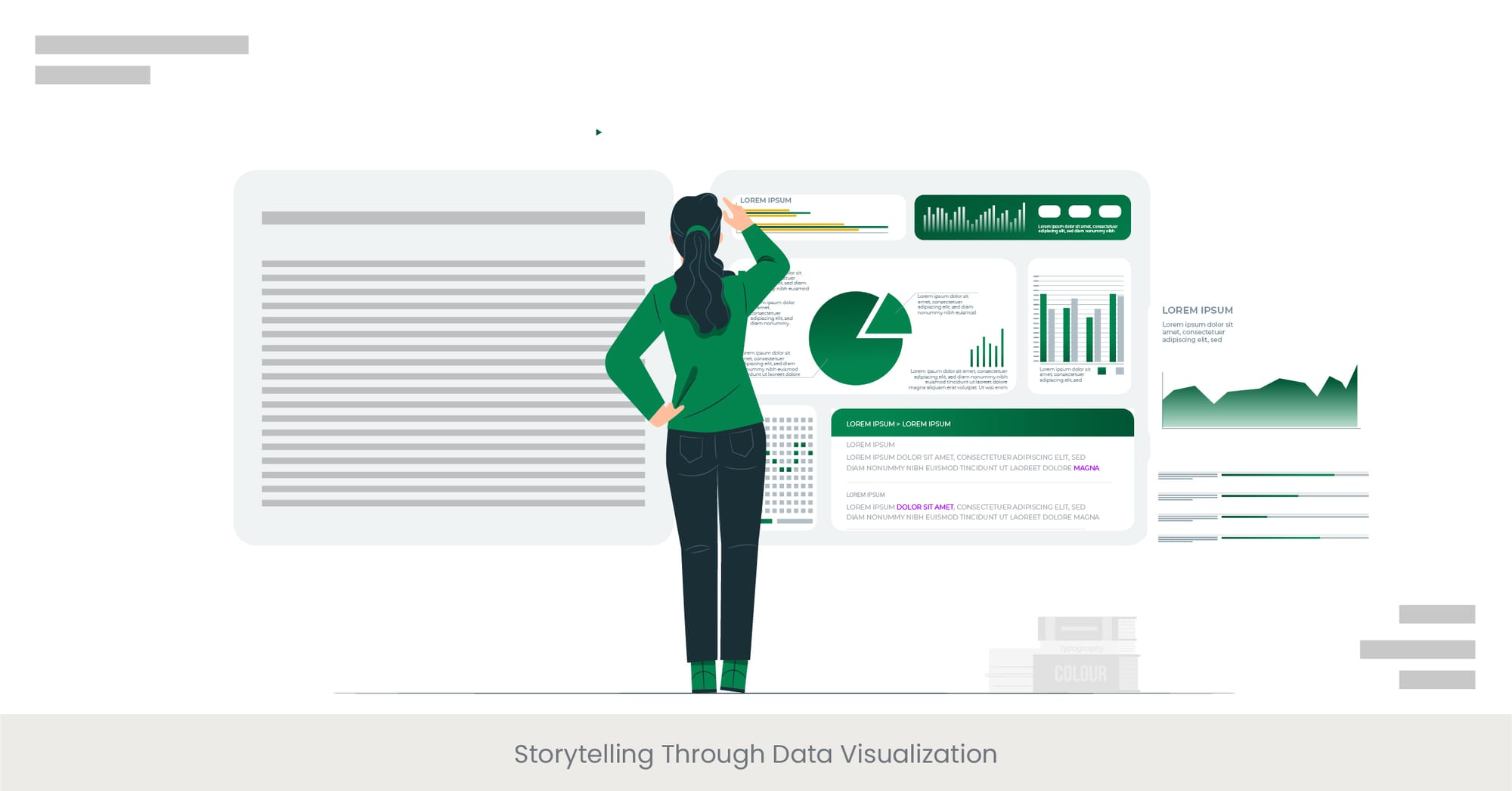
Narrative Power in Numbers
Data visualization transcends traditional data presentation methods by weaving complex information into compelling visual stories. In marketing decks, storytelling through data visualization is not merely about showcasing statistics; it's about creating a narrative that resonates with the audience, making the abstract tangible and the mundane captivating. This approach aligns seamlessly with marketing strategies aimed at engaging target markets through relatable, persuasive narratives. Effective data storytelling can illuminate trends, highlight achievements, and substantiate marketing efforts, all while keeping the audience engaged and informed.
The Evolution of Data Storytelling
Historically, data was presented in dense, often impenetrable tables and charts, which did little to engage or inform non-specialist audiences. The evolution of data visualization as a storytelling tool reflects broader shifts in marketing and communication strategies—from mere transmission of information to engaging and persuasive storytelling. Modern data visualization tools and techniques allow marketers to transform dry data into dynamic visual narratives. This evolution underscores the growing recognition of the power of visual storytelling in making complex information accessible and engaging for a broad audience.
Innovative Examples of Data Storytelling
Leading brands across industries have harnessed the power of storytelling through data visualization to enhance their marketing presentations. A prominent example includes a global e-commerce giant that uses dynamic graphs and heat maps to illustrate consumer buying patterns, effectively highlighting market dominance and growth areas. Another case is a health technology company that visualizes patient recovery data over time, demonstrating the efficacy of its products in a compelling, easily digestible format. These examples illustrate the capacity of data visualization to not only inform but also engage and persuade by transforming data into a powerful narrative tool.
Empirical Validation of Storytelling Efficacy
The effectiveness of storytelling through data visualization is well-documented. Research indicates that presentations incorporating data visualizations are up to three times more persuasive than those relying on text and numbers alone. Furthermore, a study by a leading digital marketing institute found that marketing materials featuring data stories significantly enhance audience retention and engagement, with viewers more likely to recall and act on the information presented. This body of evidence underscores the strategic importance of storytelling through data visualization in crafting effective marketing presentations that resonate with audiences and drive action.
Unlock the Power of Professional Presentation Design—Start with INK PPT
Tips for Seamless Remote Presentations

Mastering the Virtual Stage
In today’s digital-first world, delivering seamless remote presentations has become a key skill for marketing teams. Whether it's a sales presentation agency for leadership teams or a tailored sales deck for global brands, mastering remote presentation strategies is essential for success. Beyond the basic requirements of a stable internet connection and a quiet room, marketers need to leverage engaging storytelling, effective use of technology, and the ability to connect with an audience not physically present. These practices ensure that your marketing strategy communicates effectively, no matter where your audience is located, making each presentation an opportunity to impress and engage.
The Shift to Digital Engagement
The shift from in-person to remote presentations has dramatically changed the landscape of business communication. Accelerated by global events, this shift has fueled the demand for custom sales presentations for CXOs and marketing teams, making remote presentations more crucial than ever. This transition isn’t just about adopting new technologies; it’s about understanding how to deliver concise, relevant content and strategically use visuals to keep the audience engaged. By embracing this shift, marketers can create Google Slides customizations for marketing teams that resonate across geographical barriers.
Elevating Remote Presentations: Case Studies
Several global brands have excelled in remote presentations, setting benchmarks for effectiveness. For instance, a leading software company renowned for virtual product launches integrates tailored sales decks for global brands, using immersive storytelling and high-quality video content to captivate its audience. These companies ensure that their sales presentation agency for leadership teams provides immersive content, which is backed by strategic use of multimedia elements. By incorporating real-world applications, these brands engage customers and highlight the product’s impact.
Backing Up Best Practices with Data
Studies show that custom sales presentations for CXOs that incorporate multimedia elements—such as videos, graphics, and animations—can increase engagement by up to 40%. Research from a global communications survey also found that remote presentations delivered with clarity and enthusiasm lead to a 30% higher retention rate. Incorporating pauses and emphasis throughout your presentation, especially when preparing Google Slides customizations for marketing teams, has been proven to maintain audience attention and ensure that key messages are retained.
Explore INK PPT’s Case Studies to See Our Success in Action
Incorporating Video and Audio Elements
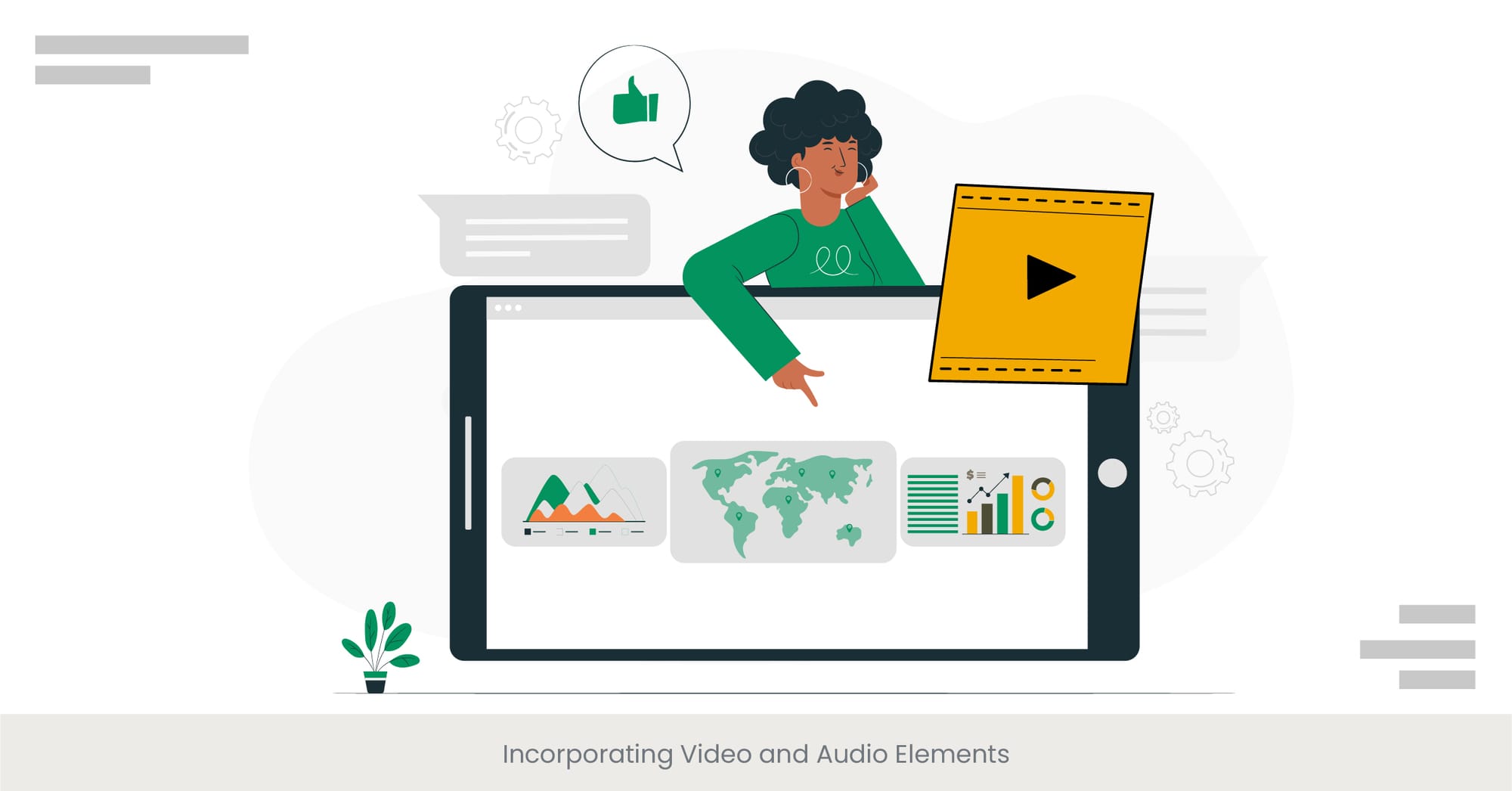
Enhancing Engagement Through Multimedia
Incorporating video and audio elements into custom sales presentations for CXOs represents a shift towards more engaging and immersive presentation experiences. Using videos, voiceovers, and interactive elements helps marketers convey complex information in a succinct and compelling way, boosting emotional engagement. Whether it's for a sales presentation agency for leadership teams or an entire team of marketers, multimedia integration elevates the content, ensuring that the message resonates deeply with the target audience.
The Multimedia Evolution in Marketing
The rise of multimedia in marketing presentations is a part of a broader trend towards more engaging content formats. Tailored sales decks for global brands now often feature integrated multimedia like videos and live product demos. This multimedia evolution underscores the importance of using Google Slides customizations for marketing teams to craft presentations that are dynamic and engaging. By stimulating multiple senses simultaneously, marketers can capture and retain audience attention in an increasingly distracted digital environment.
Real-World Multimedia Success Stories
Several brands have used video and audio to elevate their presentations. For example, a fashion brand integrated runway clips in its custom sales presentations for CXOs, leading to increased viewer engagement and higher conversion rates. Similarly, a technology firm used customer testimonial videos to add authenticity and trust to its sales presentation agency for leadership teams, significantly boosting customer confidence and increasing sales.
Evidence Supporting Multimedia Integration
Research on multimedia in marketing presentations reveals its significant benefits. Studies show that incorporating video increases viewer interest by up to 74%, making it a powerful tool for enhancing engagement. Additionally, audio elements like music and voiceovers improve emotional connection with content. A survey found that presentations with these multimedia features significantly outperform those without, boosting engagement and conversion rates. Brands that use Google Slides customizations for marketing teams often experience a higher return on investment (ROI) and greater audience retention.
Accessibility Considerations in Design
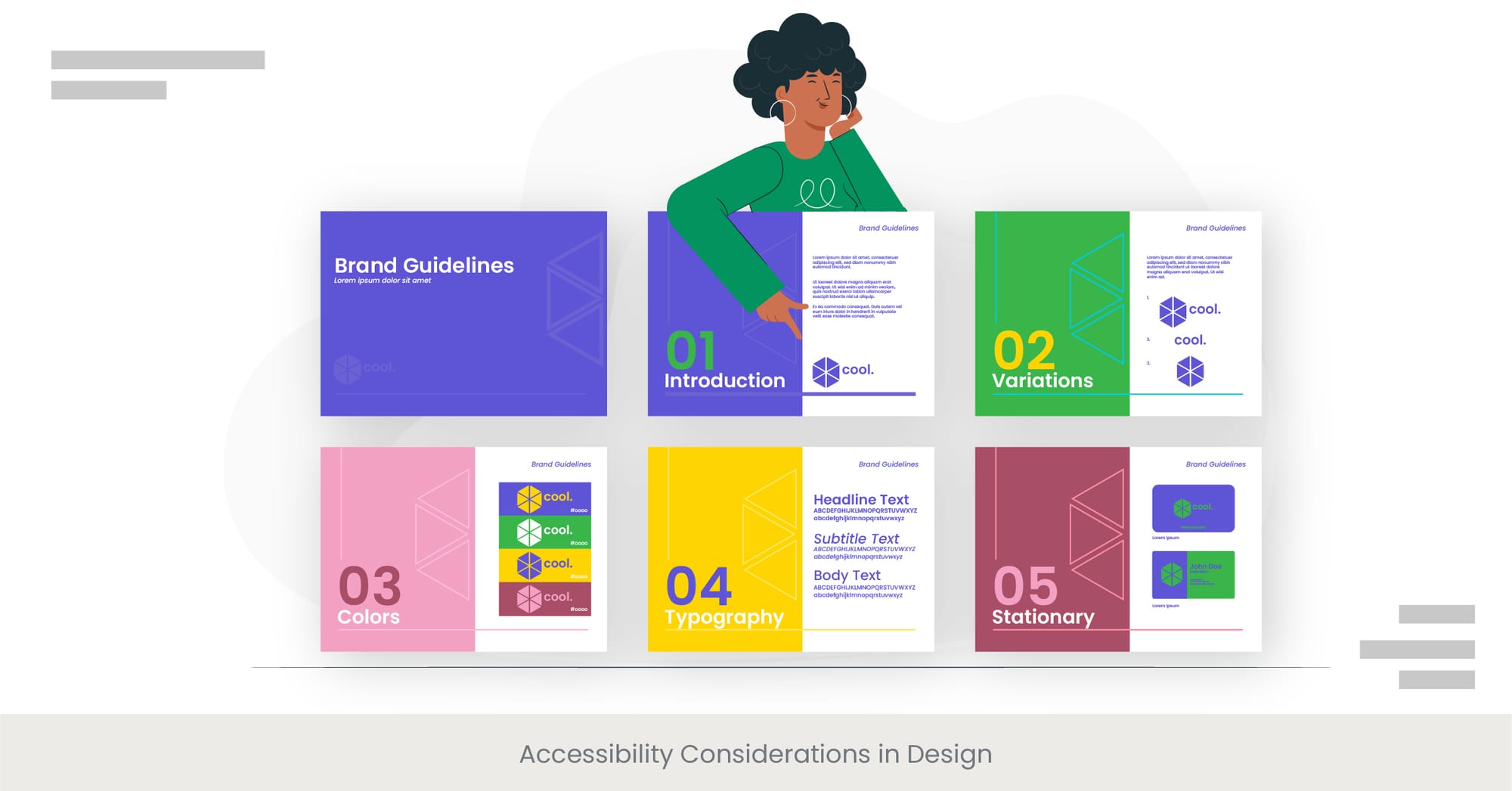
Ensuring Inclusivity in Marketing Materials
Inclusivity in marketing is more important than ever. Sales presentation agencies for leadership teams should incorporate accessibility features like alt text for images, readable fonts, and color contrast compliance to ensure all content is accessible. This inclusivity broadens your reach, ensuring that no segment of your audience is left behind. By prioritizing accessibility in custom sales presentations for CXOs, companies can foster inclusivity while boosting brand loyalty.
The Evolution of Accessibility in Marketing
The importance of accessibility has grown significantly alongside the global push for equality. Brands today realize that their marketing decks, including tailored sales decks for global brands, need to cater to a wide range of abilities. This includes designing for individuals with visual, auditory, mobility, and cognitive disabilities. By embedding these considerations into Google Slides customizations for marketing teams, marketers ensure that their presentations are not just inclusive, but also effective for a diverse range of users.
Highlighting Success in Accessible Design
Some brands have effectively used accessibility features to boost engagement. A consumer electronics company redesigned its marketing presentations to meet accessibility standards, improving engagement from a wider user base. Additionally, an online retailer used captions and descriptive audio in its presentations, significantly expanding its market reach to the deaf and hard-of-hearing community. These brands showcase the importance of sales presentation agencies for leadership teams that prioritize accessible design, resulting in greater customer satisfaction and loyalty.
Research and Data on Accessibility Impact
Research supports the value of accessibility in marketing. Studies indicate that accessible designs not only enhance the user experience but also lead to higher engagement and conversion rates. A report found that brands adhering to accessibility guidelines see a significant increase in customer satisfaction, which ultimately boosts sales. For instance, companies that implement accessibility standards in tailored sales decks for global brands often experience a more loyal customer base and higher conversion rates.
A/B Testing Presentation Elements
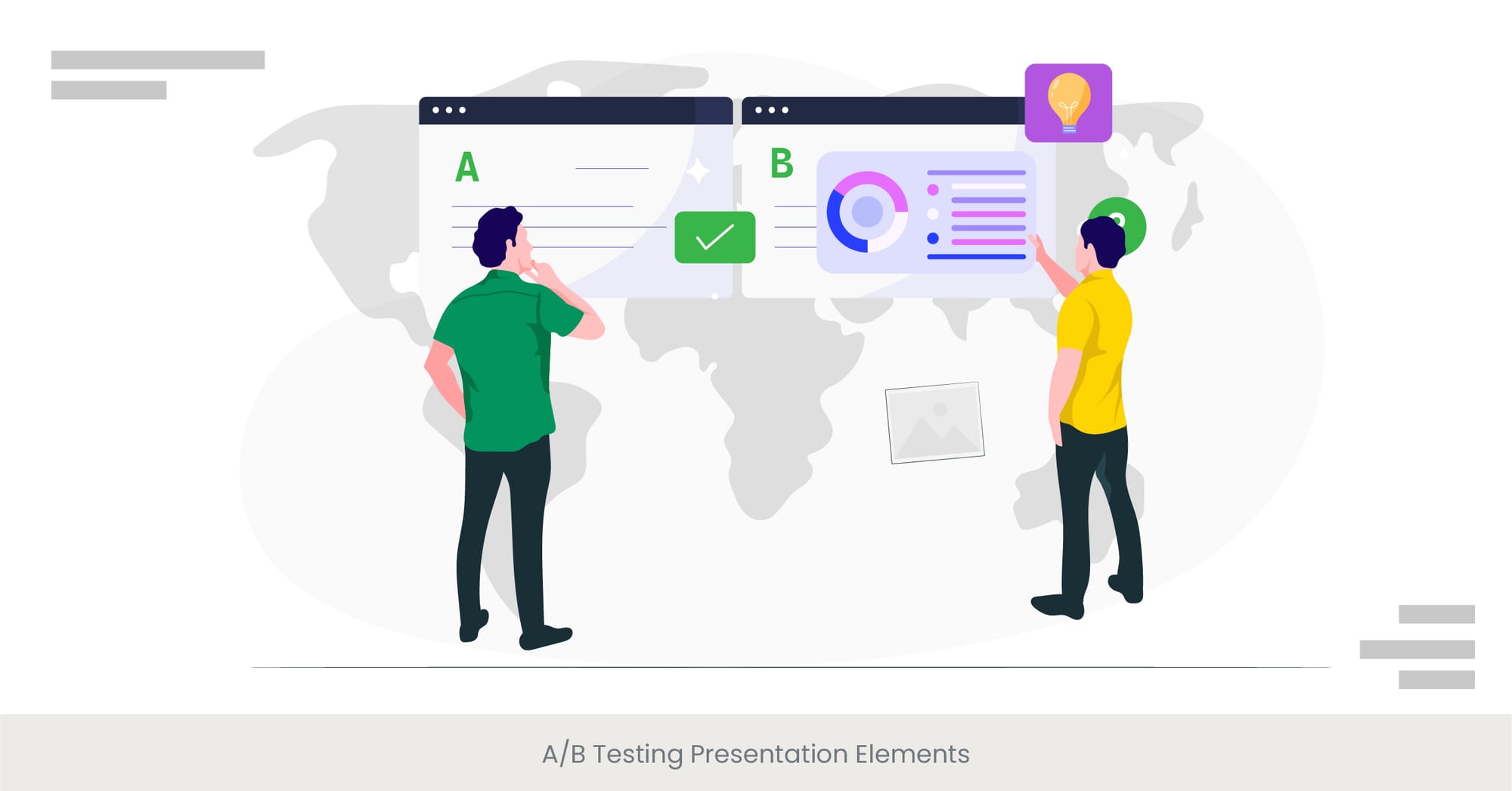
Optimizing Engagement Through Experimentation
A/B testing has become a fundamental practice for marketers aiming to optimize their presentations. By comparing two versions of a sales presentation agency for leadership teams, marketers can identify which elements drive the highest engagement and conversions. This empirical approach ensures that every element of your presentation—whether it’s the layout, call-to-action (CTA), or multimedia content—resonates with your audience and supports the overall marketing strategy.
The Science Behind A/B Testing
A/B testing is rooted in data-driven decision-making. In the past, marketers relied on intuition and best practices when creating presentations, but now, they can use A/B testing to optimize everything from Google Slides customizations for marketing teams to custom sales presentations for CXOs. This approach helps brands avoid guesswork, resulting in presentations that are more likely to meet engagement and conversion goals.
Real-World Impact of A/B Testing
Numerous brands have leveraged A/B testing to refine their marketing presentations, leading to significant improvements in performance. For example, a leading e-commerce brand conducted A/B tests on its product launch presentations, discovering that a more minimalist design significantly improved user engagement and sales. Another instance involves a B2B technology company that tested different versions of its marketing deck's CTA, finding that a more direct and action-oriented phrase increased lead generation by over 20%. These examples underscore the tangible benefits of A/B testing in enhancing the effectiveness of marketing materials and strategies.
Empirical Evidence Supporting A/B Testing
A/B testing is proven to improve presentation effectiveness. Research indicates that systematic A/B testing can lead to a 10-25% increase in conversion rates. Companies that integrate this testing into their marketing strategies see higher engagement and ROI. For marketers using sales presentation agencies for leadership teams, A/B testing allows them to fine-tune every aspect of their content for optimal performance.
Turn Your Vision into Reality with INK PPT's Custom Solutions.
Building a Repository of Marketing Templates
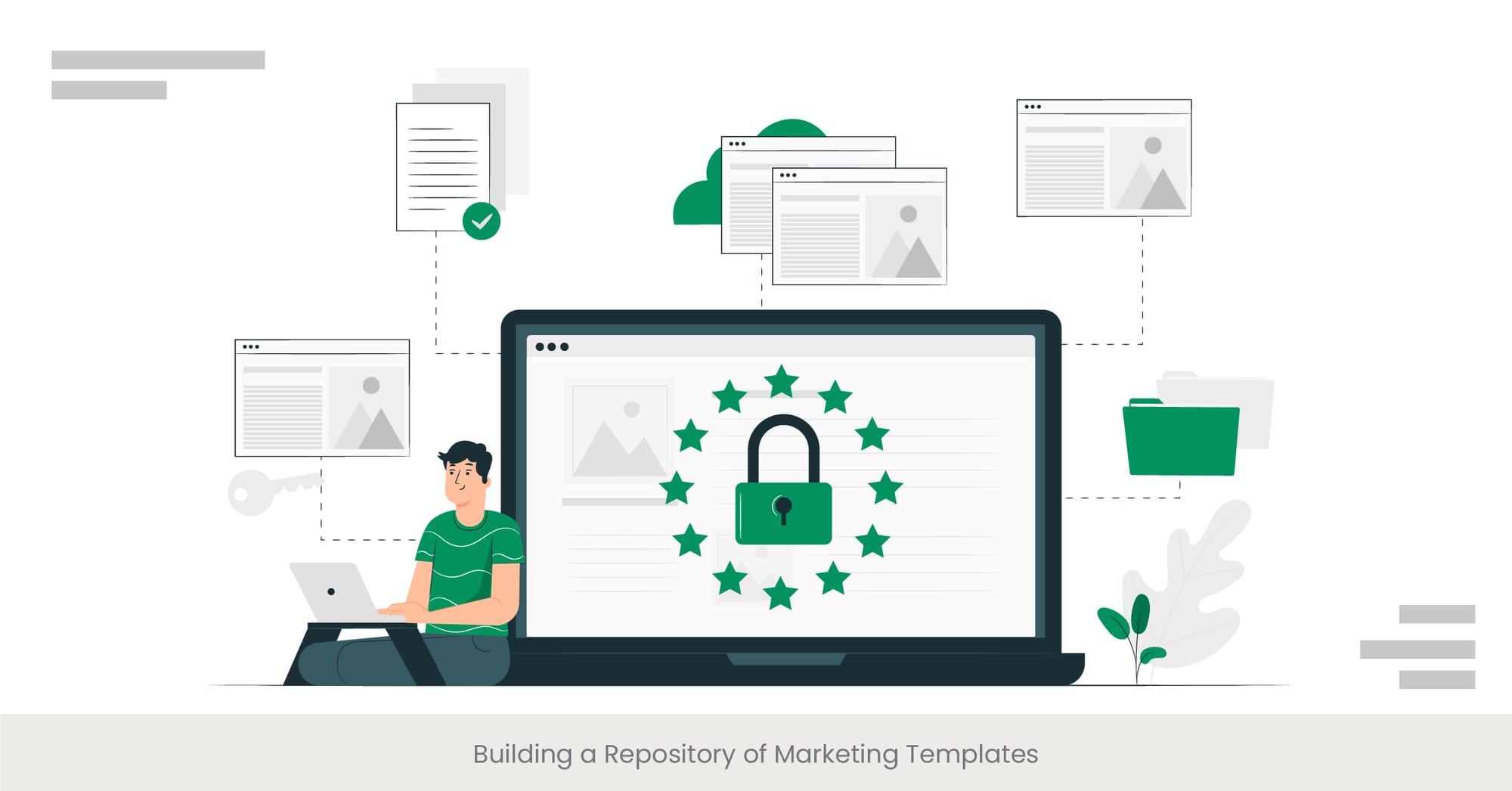
Centralizing Resources for Efficiency and Consistency
Building a repository of marketing templates is crucial for brand consistency and efficiency. By centralizing presentation resources—like tailored sales decks for global brands and Google Slides customizations for marketing teams—brands can streamline content creation while ensuring that all marketing materials adhere to the brand's voice and strategy.
The Foundation of Marketing Scalability
Having a centralized template repository enables marketing teams to scale efficiently without compromising quality. This allows them to deliver consistent custom sales presentations for CXOs across various channels. The foundation of scalability lies in this centralized approach, which helps maintain a consistent brand experience across regions.
Success Stories: Template Repositories in Action
Many brands have reaped the benefits of template repositories. For instance, a global tech firm streamlined its product launch preparations by creating a central repository of marketing presentations. Similarly, a retail chain used template libraries to ensure consistency across its regional stores. Both examples demonstrate how sales presentation agencies for leadership teams can use template repositories to boost efficiency and brand alignment.
Data-Driven Insights on Template Repositories
The impact of marketing template repositories on brand consistency and operational efficiency is backed by compelling data. Research indicates that organizations with centralized content marketing resources, such as template libraries, report a 15-25% increase in content production efficiency. Furthermore, studies have shown that consistent brand presentation across all platforms increases revenue by up to 23%. These statistics highlight the strategic value of building and maintaining a repository of marketing templates, underscoring its role in fostering brand unity and streamlining marketing processes.
Need Presentation Help?
FAQs

What are templates in marketing?
Templates in marketing are pre-designed frameworks that provide a consistent structure for creating marketing materials. They ensure that documents, presentations, and digital content adhere to brand guidelines, facilitating a coherent brand identity across various channels. These templates can range from email marketing layouts to social media post designs and marketing presentation decks, significantly reducing the time and effort required to produce new content while maintaining brand consistency.
What are the 7 elements of a marketing plan?
The seven critical elements of a marketing plan include:
Executive Summary: A concise overview of the entire business plan, highlighting key points.
Market Analysis: Insights into the market conditions, target audience, and competition.
Marketing Objectives: Specific, measurable goals the marketing plan aims to achieve.
Strategy and Tactics: The approach to using marketing tactics and reaching objectives, including marketing mix decisions.
Budget: Detailed allocation of financial resources to various marketing activities.
Marketing Channels: The platforms and mediums used to reach the target audience.
Performance Metrics: Key Performance Indicators (KPIs) and metrics to measure success.
How do I create a marketing template?
Creating a marketing template involves:
Identifying the type of marketing material needed (e.g., email, social media marketing, presentation).
Establishing design elements that reflect the brand’s identity, such as logos, color schemes, and typography.
Deciding on the layout and structure that best conveys the message.
Incorporating placeholders for customizable content such as text, images, and CTAs.
Testing and refining the template based on feedback and performance.
What should be included in a marketing strategy presentation?
A marketing strategy presentation should include:
An executive summary of the strategy.
Analysis of the current market situation.
Clear marketing objectives and goals.
Target audience identification competitive analysis and insights.
Detailed overview of the marketing mix (product, price, place, promotion).
Action plans and timelines for strategy implementation.
Budget and resource allocation.
Metrics for measuring success and performance.
What are the 7 steps of marketing strategy?
The seven steps of a marketing strategy include:
Market Research: Gathering and analyzing information about the market, competition, and customer needs.
Target Audience Definition: Identifying and understanding the specific group of consumers the marketing efforts will focus on.
Unique Selling Proposition (USP) Development: Determining what makes the product or service unique and appealing to the target market or audience.
Pricing and Positioning Strategy: a pricing strategy: Setting prices and positioning the product or service in the market in a way that highlights its USP.
Distribution Plan: Deciding how the product or service will be delivered to the consumer.
Promotional Strategy: Planning and executing the advertising, marketing budget and promotion of the product or service.
Metrics and Evaluation: Establishing KPIs to measure the effectiveness of the marketing strategy and making adjustments as needed.
How do you present a new marketing strategy?
Presenting a new digital marketing plan and strategy effectively involves:
Starting with a clear and compelling executive summary.
Outlining the research and analysis that informed the strategy.
Clearly defining the marketing objectives content strategy and goals.
Detailing the target audience and the proposed marketing mix.
Explaining the implementation plan, including timelines business goals and responsibilities.
Discussing the budget and resource allocation.
Highlighting the expected outcomes and how success will be measured.

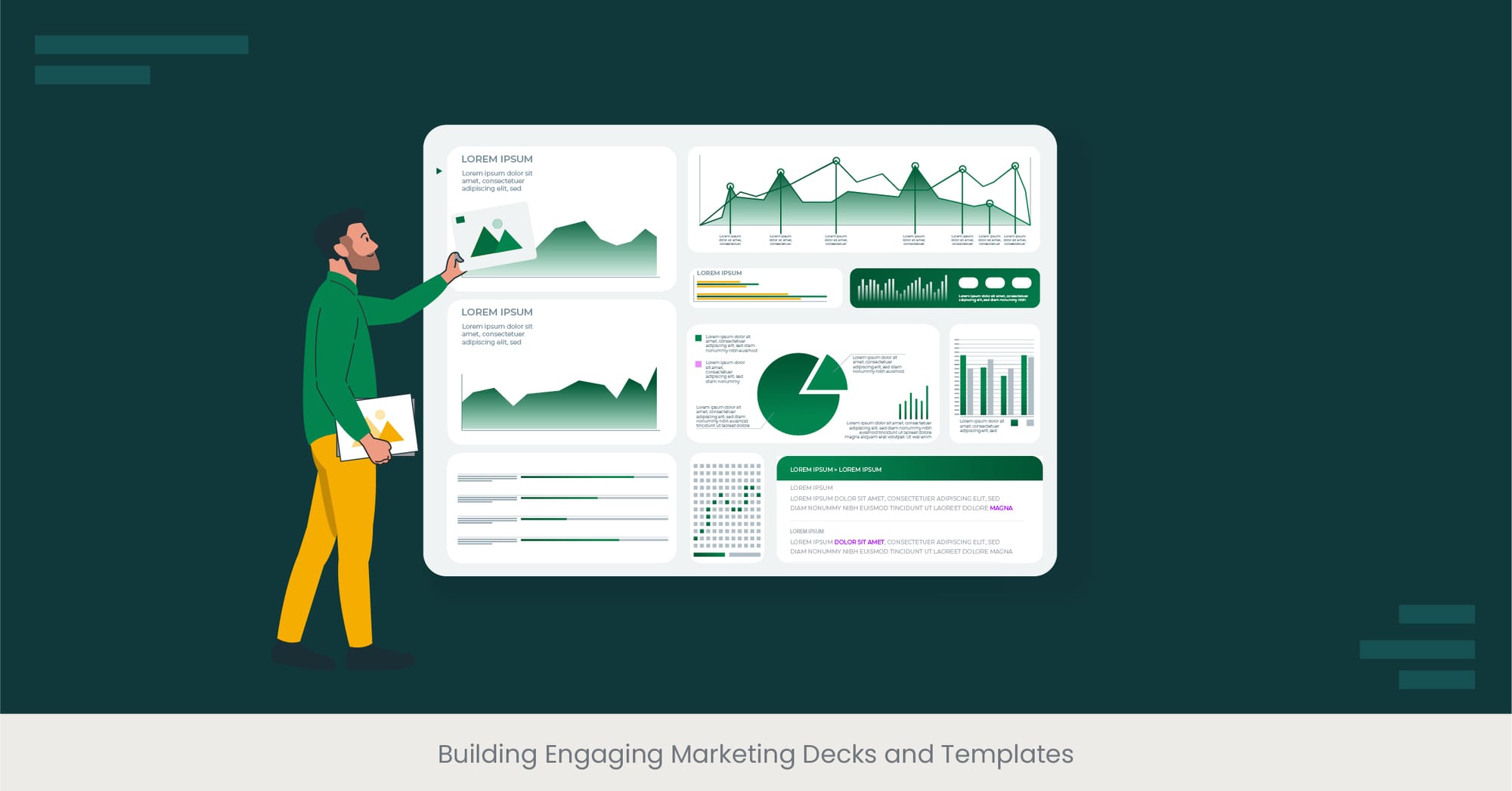

%20(1).jpg)
%20(1).jpg)
